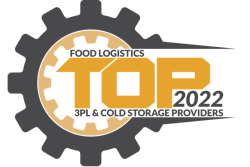
Chances are you are just now starting to see a return to something resembling normalcy in the supply chain. After more than two years of non-stop disruption, upheaval, and at times, outright chaos, there are signs that the crisis is subsiding. In certain markets, modes and equipment types, rates are declining and available capacity is opening up. This is far from universal, but there are enough positive signs to give shippers glimmers of hope that the worst of the tumult is behind us. While shippers may be breathing a sigh of relief, now is not the time for complacency.
This transitionary period is the perfect time for shippers to revisit the fundamentals of their supply chain strategy, and the partners that support it. A lot has changed since the pandemic upended the global supply chain. Shippers had to make lightning-fast decisions, often with little data, in order to simply keep their supply chains moving. Some of those decisions were winners, others, not so much. Shippers must evaluate which of those supply chain adjustments should be permanent and which should be rolled back. Planning for what is next should be top of mind right now. Think of it as “The Great Reset.”
The disruptions of the last two years have come at a time when supply chains were already changing dramatically. Historically long, slow, and cheap supply chains were shifting to shorter, faster, and more expensive models due to the Amazon effect.
Despite the “reset,” this trend will persist, and for shippers, the challenge of maintaining shipment integrity- maximizing on-time, intact and in-full shipments- remains. Therefore, shippers will need to look at their networks holistically and evaluate whether their manufacturing and warehousing centers are located in the right places vis a vis their customer base, and whether their transportation network connects the dots in the most efficient, cost-effective, and customer-centric way possible.
A supply chain re-set starts with understanding what is new or different about your supply chain. Have your customer’s expectations changed? Do you have reason to believe these new expectations will persist, or do you expect your customers’ needs will revert to a pre-pandemic norm? Do you have new customers that require new lanes and new service levels? Where did disruption impact your operations the most and what is the solution to ease these pain points? Which vendor partners rose to the occasion, and which did not? Answering these questions is critical to clarify the supply chain challenge- or challenges- you need to solve and determine your path forward.
To make this actionable, consider the core components of your supply chain:
· Overarching supply chain strategy. What does your customer require in terms of speed and shipment integrity, and what cost profile are you- or they- willing to bear to support this?
· Network structure. Where is your product produced? Where are your customers? Where and how much inventory do you position to support your strategy?
· Transportation and distribution. How do you connect the nodes of your network? Who are the partners that support this critical activity?
Making changes to your supply chain strategy and network structure can take considerable time to plan and implement. Making impactful changes to your transportation can be more immediate.
Transportation optimization is mostly about finding or building lane density, either on your own or via an aggregator. Understand where you have the density to bring to bear and where you do not. Taking a fresh look at your customer’s needs is critical, but easier said than done. It takes both data and robust analytic capabilities, but you do not have to go it alone.
Sophisticated providers can leverage your data to engineer a solution that balances cost and service level. These insights are not only valuable in the moment but offer the opportunity to share a new supply chain profile with both incumbent and potential new providers. When shippers communicate the supply chain profile in data, it allows them to challenge providers to identify solutions and opportunities that can leverage their shipment volumes through aggregation and/or consolidation, alongside other like-minded shippers, to everyone’s benefit.
This data analysis can pay dividends internally as well. Often, transportation costs and disruptions are a symptom of pressures from other areas of the business that sit upstream. For example, manufacturers that struggle to keep up with demand may resort to an over-reliance on expedite shipping to speed goods to market. However, this service can come at a premium, putting undue pressure on transportation budgets. It is critical for shippers to communicate the tradeoffs between speed and cost throughout their organization to better align with manufacturing and sales. Once shippers improve internal alignment, they will have more clarity on the specific barriers that remain and be in a better position to challenge their providers to develop and deliver solutions.
While the market seems to be normalizing, shippers still deal with dynamic and ongoing macroeconomic and geopolitical challenges that cloud a clear view of the future. Third-party logistics (3PL) providers can serve as a source of leadership by offering advanced analytics capabilities and a point of view informed by transportation operations that span industry verticals, modes and continents. Shippers of all sizes can benefit from the scale of global multimodal 3PL. Not only can large 3PLs leverage shipment density and buying power to the benefit of their shipper clients, but they can also help shippers conduct complex analyses that measure the costs of inventory sitting on a ship on the water or in a warehouse versus the same inventory available on retail shelves.
The result of a robust shipper/3PL partnership extends beyond achieving lower rates and better service by offering enhanced certainty and a greater ability to control outcomes that truly give shippers the opportunity to achieve “sovereignty” over their product. In a complex and evolving marketplace, that level of certainty is the gold standard, and it is only possible when shippers, 3PLs, carriers and other partners can rally around data-driven insights.


















